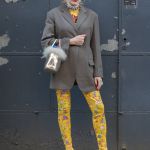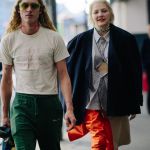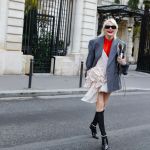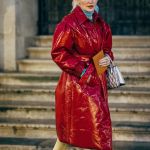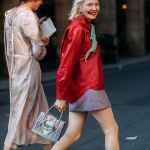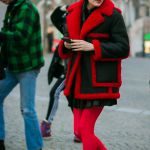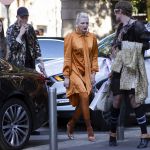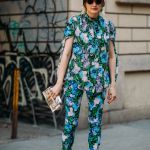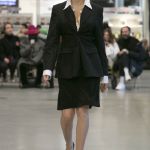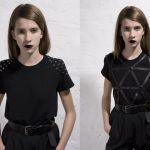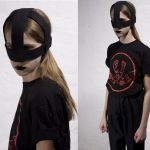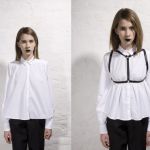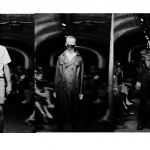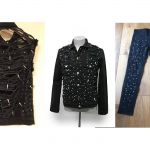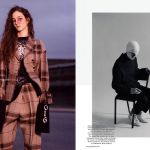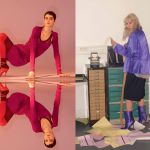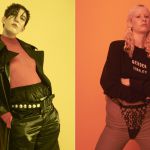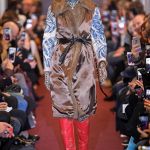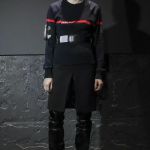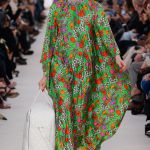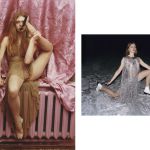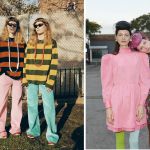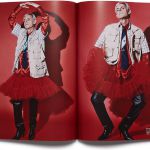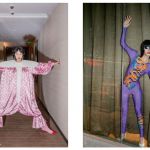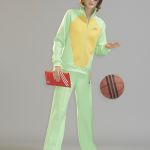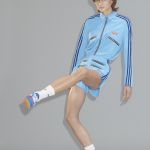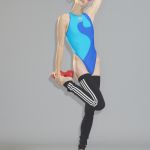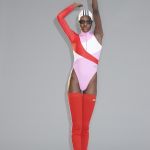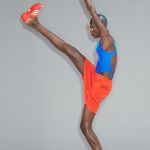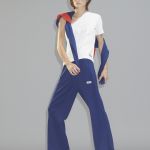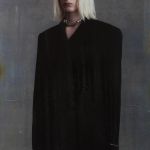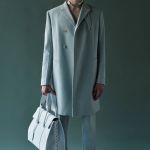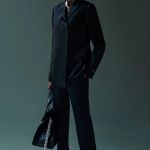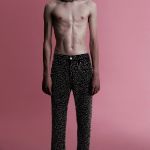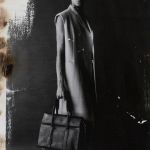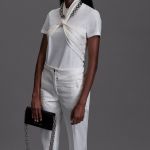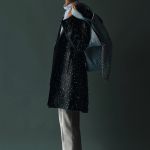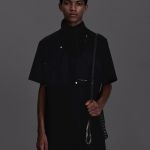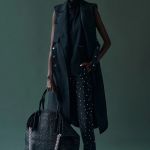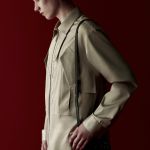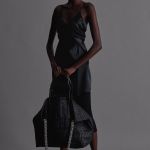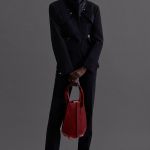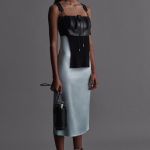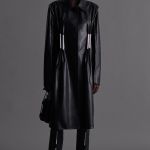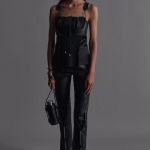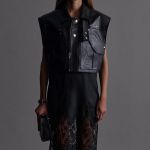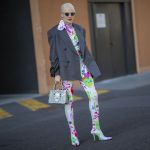
From post-soviet style to Kanye West: the rise of Lotta Volkova
The stylist and image-maker that has shaped contemporary fashion
September 14th, 2020
Lotta Volkova. This is the name that has echoed the most in the contemporary fashion system. This very tall girl, with a child's face and alabaster skin, is the mind (or rather the taste) behind the success of Demna Gvasalia and Gosha Rubchinskiy, together with them she brought the post-Soviet style under the spotlight, influencing the current aesthetic vision. Here's everything you need to know about her.
Her name comes from a rock classic
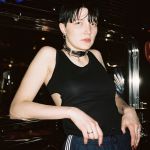
Lotta Volkova Adam. It sounds damn cool. The credit for her name goes to her mother who in Russia in 1984, the year of birth of the girl, combined the desire for rebellion and her passion (also shared by her grandmother) for the post-punk early '80s and the rock of Led Zeppelin, especially for their hit Whole Lotta Love.
She owes her passion for fashion to her mother and Jean Paul Gaultier

On the eastern border of Russia, precisely in the port city of Vladivostok in the early 90s, access to clothes and fashion magazines was limited. Lotta got to know Western products thanks to her father, captain of a cargo ship, who, on returning from his travels, brought her boxes, clothes and other products taken around the world. The girl recalls that period in this way:
We saw fashion as something inaccessible, in a way, and that's why it was so exciting. You couldn't necessarily go and buy what you wanted. You needed to have a tailor do it or convince someone to go abroad to buy it.
The hunger for pop culture was great and, as a teenager, Volkova devoured the images of fashion shows on her computer, even if the first real contact with the world of fashion was thanks to Eurotrash, English TV program hosted by Antoine de Caunes and Jean Paul Gaultier, as she said:
The first time I learned about fashion was through the series Eurotrash, that program with Jean Paul Gaultier and Antoine de Caunes. I was watching Jean Paul Gaultier naked in a tree, interviewing someone else naked in another tree. It was so fucked up and so much fun. I thought, "Wow, I want to be like these people."
Add Björk's vision in the infamous swan dress by Marjan Pejoski at the 2001 Oscars ceremony and the aesthetic imagery of the young Volkova was marked forever.
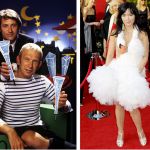
Her mother, a physics teacher at the medical school with a rebellious spirit and a love for John Galliano and Alexander McQueen, gave her the final push by suggesting her to attend the same school of her favourite designers: Central Saint Martins.
She started her career designing clothes
The future image-maker arrived in London at 17 for some quarterly courses at Central St Martins and graduated in art and design. If she attended classes in the morning, in the evening she danced with her friends. She soon became famous in the English club and nightlife world for her punk-inspired DIY looks. Friends and associates used to ask her for exclusive pieces until someone suggested her to create a real brand. This is how Lotta Skeletrix was born.
It was very basic. It was sort of streetwear inspired by punk, New Wave, and post-punk culture. It got picked up by a few buyers, so I started selling it. Then I had my first show, and I started selling at Dover Street Market in London - and I met Rei Kawakubo. It was a very natural process. I never aimed at becoming a designer or anything like that.
She will say a few years later in an interview. When she finished school, she moved to Paris and her brand fell into oblivion. Volkova realized that her favourite part of the work was producing images, creating looks. Now she was ready to start a new adventure as a stylist, thanks to the first job offered by the famous photographer Ellen Von Unwerth.
A mutual friend introduced her to Demna Gvasalia
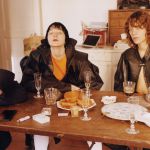
Lotta's life is marked by lucky and random encounters, a demonstration of how important it is sometimes to be in the right place at the right time. In London, during her club nights (she hosted a night called Kashpoint herself) she met Gareth Pugh, became friends with Gosha Rubchinskiy and was photographed by Wolfgang Tillmans. Nicola Formichetti, who at the time worked as a designer and buyer for Pineal Eye boutiques in London, and Side by Side in Japan, was one of the first to support his Skeletrix brand. In Paris, Ellen Von Unwerth, intrigued by her look, began her career as a stylist, while it was a mutual friend, Thom Murphy, who introduced her to her future husband, creative consultant Alban Adam. In the same way, she met Demna Gvasalia and, as always "by chance", she began to collaborate with him. Her words:
One day, he showed me the photos from his collection. I found his clothes super, but not the styling. So, Demna asked me to be involved. We have been working together since 2015. I'm a brand consultant, I take care of collections and fashion shows, from casting to style supervision.
So for Lotta the road to exceptional success was opened. Now famous, Volkova continues to work mainly with friends such as Sander Lak for Sies Marjan, Johnny Coca for Mulberry or photographer Harley Weir. Even in street style shots, it's almost impossible to find her on her own. Lotta is always surrounded by a crew of models and creatives like Paul Hameline, Jamie Bochert, Walter Pearce and Adrian Hurtado.
She helped to establish the post-Soviet style

Gosha Rubchinskiy, Demna Gvasalia and Lotta Volkova. These three are the "inventors" of the post-Soviet style. Three thirty-year-olds with shared roots, talent and a precise aesthetic vision.
We are of the same generation and we understand each other. And then, yes, we have essential references in common. Russia, the fall of communism, the Orthodox Church, the 'nineties. Then each one reworks them in his own way.
With these words, Lotta talks about the phenomenon that has hit the fashion industry. This style is based on unconventional beauty, made of oversized garments, sweatshirts with metal band prints, 90s sportswear and t-shirts with Cyrillic text. Elements considered cheap or kitsch just recently became the focus of the new luxury, what everyone wants to wear. The fashion of Gvasalia and Rubchinskiy, made highly impressive by Volkova's outfits, is a mash-up of contaminations, quotations, between punk, constructivist graphics, and the street culture experienced by the three creatives during their adolescence spent on bread and TV in the former Iron Curtain, where, after the collapse of communism, everything seemed possible, new and better. The language, the imagination, the clothes, filtered from the point of view of those teenagers (and for this reason raw, unrefined) created a brand-new concept of beauty that sounds new, underground, unique and, for this reason, attractive to the Western public. All amplified by the fact that these post-Soviet hypercool garments are worn by friends, people recruited with street-casting, ordinary people with normal bodies, "nodels" (as Vogue Uk called them). A charm similar to that of Berlin a couple of decades ago, as Alexandre-Samson, one of the curators of the Parisian fashion museum Palais Galliera in Madame Figaro, stated:
It's a nostalgia for the past without nostalgia, it's rather an aesthetic of Slavic culture, even if you still feel a certain affinity with the Berlin underground style.
One of her greatest ability is to understand and capture the taste of the millennials

I have always been more interested in clothes than fashion. The way you look at clothes, and how they represent what you like in life, how they represent your interests. For me, clothes are a uniform presenting the culture you feel connected to. I love how a t-shirt says so much about you. I grew up in Vladivostok, Russia, in the former USSR. We had nothing, but we had the Internet. I was obsessed with information. I was obsessed with finding things out. That is still my driving force, to find something new. I want to discover and make other people discover. Obviously, there are no subcultures to be discovered anymore, at least not in the Western world. It’s more about the remix of information. Kids today – the new generation– they think in different ways. They don’t even have the knowledge of what a subculture is. It is not relevant to them. If they want to wear a punk shirt, that doesn’t mean that they have to listen to punk music or have a political point of view. They don’t have that mentality. In my generation, when we were grunge, we were grunge. It was a mindset. That’s why today I am so interested in the different codes of social uniforms.
Words from Lotta which, even as I've just said, indicates Instagram as the medium best reflects its vision of the future.
Beautiful and ugly coexist in her aesthetic vision
It is said that behind a great man there is always a great woman. The great woman behind the success of Gvasalia and many contemporary creatives is Lotta Volkova. It is her that with her taste made the post soviet style captivating and winning. Her work is a continuous search for balance between global and local, mainstream and subculture, fake and authentic, beautiful and ugly.
I’m interested in looking at things differently. I’m interested in looking at something that we aren’t necessarily used to being considered beautiful. I’m interested in showing another side of things which I do find beautiful, which I do find real and interesting. I’m not necessarily interested in bad taste or kitsch, either—it is just something that I look at differently. I'm interested in showing another side of things. Don't get me wrong, I like beautiful things too, but going beyond the classic boundaries of beauty seems much more interesting to me. I like digging under appearances, going deep.
Lotta said several times and added:
I've always had a particular sense of aesthetics, very strong and a bit raw. I live of contrasts, for me it's all black or white, I don't have many middle ground... I've always been very interested in subcultures in general. Social codes, uniforms: I've always liked to play with patterns and distort them, mix references to create something new, completely different.
Lotta's aesthetic vision is strongly influenced by her background, it is a mash-up of punk, fetishism, street culture, 90s vibes that in her shootings often translates into outfits made of deconstruction, stratifications, over volumes that mix with sculptural lines, poses that enhance the mobility of the body.
She appeared 9 times on the catwalk for Demna Gvasalia
Consultant, stylist, muse and also a model. The relationship between Lotta and Demna Gvasalia is so close that she has been on the catwalk several times for her friend, both at Vetements and at Balenciaga, perfectly embodying the aesthetics of the designer. In recent seasons, however, she has remained behind the scenes. If the fashion shows leave her in the background, Volkova is still one of the favourite protagonists of street style photographers who are always ready to capture her eclectic outfits.
In her future, there's Kanye West
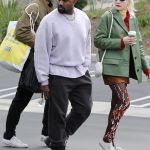
She has designed a collection in collaboration with adidas
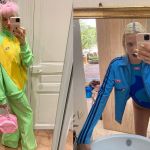
Lotta's latest project is a collaboration with adidas Originals. Launched last February with an IG shot where she was wearing a yellow and acid green tracksuit, matched with a total pink handbag, the collection includes apparel and accessories that mix 70s silhouettes and 2000s vibes. The stylist plays by reinterpreting the brand's heritage through her ugly and DIY aesthetic: the high-waisted swimsuits are inspired by the skinny bodysuits of ice-skaters and are worn with stay-up socks; the asymmetrical tops and mini tennis give a girlie twist; the green jumpsuit is an evolution of the first jumpsuit ever made by adidas; the anoraks are covered with zips; the bag is embellished with a pocket that recalls the shape of a table tennis racket. As regards the shoes, instead, Volkova selected the adidas SL72, an original silhouette designed for the athletes of the 70s, and the Trefoil Mule, a kind of platform adilette available in 2 different colours: a black style with red stripes on the side and a Trefoil logo on the upper, and a red style with white details.
The adidas Originals collection created by Lotta Volkova is available on the brand's website, in-store and in selected retailers.
She is the stylist of the lookbook for Alyx SS21 collection
Matthew M. Williams hired Lotta as stylist for Alyx SS21 collection. Presented with a lookbook shot by Toyin Ibidapo and finished via Zoom due to the pandemic, the proposal, both menswear and womenswear, reflects the evolution of the brand that, from utilitarian streetwear, is increasingly focused on tailoring. The new items, with their clean, essential and slightly boxy silhouettes, show the skill of the designer (recently appointed creative director of Givenchy) for bias cutting and impeccable tailoring construction. The attention is captured by the details such as the resin finish of the jackets, the rectangular quilting of the coats, the pockets closed by metal snap buttons, the use of faux python leather and the studs. Left behind the iconic Buckle Belt, the must-have pieces of the collection are the slip dresses, jackets and suits covered with about 12,000 semilune hand-applied studs, that itself demands three days of work.








